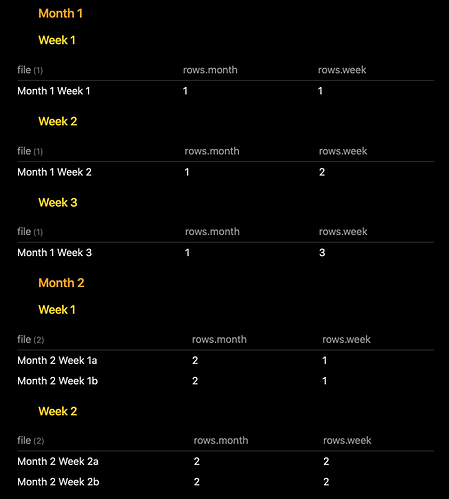Using your query as a starter, I see that within each group (or month) object, you can actually do the same GROUP BY operation, like you did on pages. But you need to do it on the group.rows variable. So you were very close to actually solving it yourself.
Full script
```dataviewjs
let pages = dv.pages()
console.log('Pages', pages)
let months = pages.groupBy(p => p.month);
for (let month of months){
console.log('Month', month)
dv.header(2, `Month ${ month.key }`);
const weeks = month.rows.groupBy(g => g.week);
for (let week of weeks) {
console.log('Week', week)
dv.header(3, `Week ${ week.key }`)
dv.table(["file", "rows.month", "rows.week"],
week.rows.map(m => [m.file?.name, m.month, m.week]))
}
}
```
You don’t need the console.log() statements, but if you expand those in the Developer Tools > Console, you’ll see that pages is similar to month.rows which also is similar to week.rows. All being Proxy’s having a Target of DataArrayImpl, which allows for GROUP BY and all the other fun functions. ![]()
With my test setup, this script generates this output:
My <h2>'s are orange, and my <h3>'s are yellow, thanks to colorful headers of Minimal .
